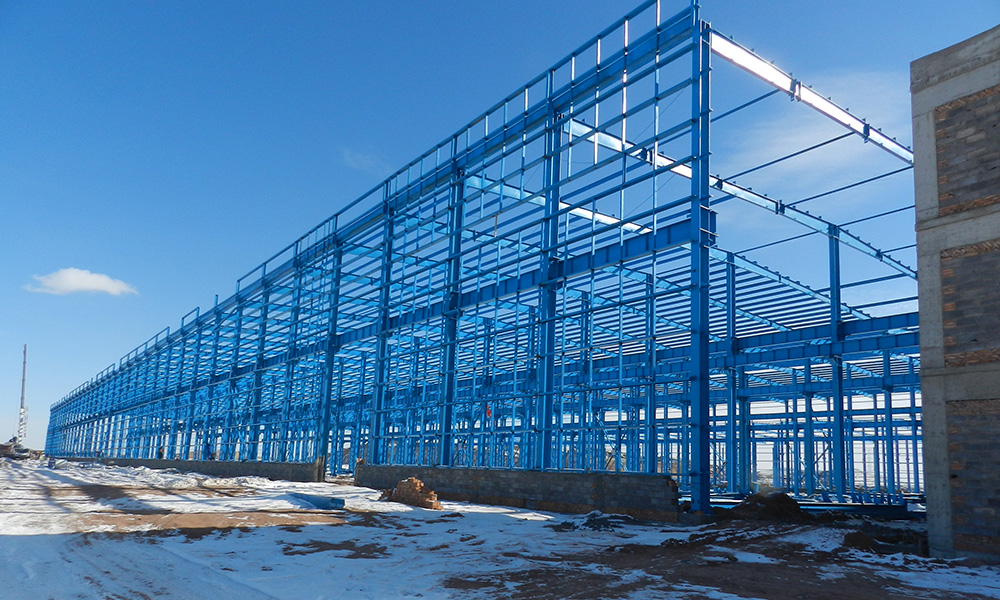
Cultivating Innovation: How Steel Buildings Enhance Agricultural Practices
Innovation has always been a driving force behind the advancement of industries, and agriculture is no exception. As the population of the world continues to grow, the demand for efficient and sustainable agricultural practices becomes increasingly critical. One of the most significant advancements in modern agriculture is the adoption of steel buildings, which have revolutionized the way farmers operate. These versatile structures offer numerous benefits that not only improve productivity and yield but also contribute to the overall sustainability of agricultural practices. This article will shed light on how agricultural steel buildings enhance agricultural practices. Read on!
Enhancing Crop Storage and Protection
One of the primary applications of steel buildings in agriculture is crop storage. These structures provide farmers with ample space to store their harvest, protecting it from moisture, pests, and rodents. Steel buildings’ insulation capabilities help regulate internal temperature and humidity levels, which is crucial for preserving the quality and shelf life of agricultural produce. Additionally, the airtight design of these buildings prevents the entry of pests, reducing the need for chemical pesticides and contributing to sustainable farming practices.
Modernizing Livestock Management
Steel structural buildings have also revolutionized livestock management practices. Traditional barns were often dark, poorly ventilated, and difficult to clean. In contrast, metal buildings offer wide open spaces and excellent ventilation, creating a healthier environment for livestock. Improved ventilation reduces the spread of diseases, while the spacious layout allows for easier cleaning and better waste management. These factors ultimately lead to increased productivity and better animal welfare, which align with the growing demand for ethical and sustainable farming practices.
Facilitating Greenhouse and Hydroponic Farming
Greenhouse farming has become an indispensable part of modern agriculture, enabling year-round cultivation and protection against adverse weather conditions. Steel structural buildings with transparent roofing and walls provide ideal conditions for controlled environments that support diverse plant growth. Furthermore, steel structures can be customized to accommodate hydroponic farming systems, conserving water and enabling the cultivation of crops in regions with limited access to arable land.
Promoting Energy Efficiency and Sustainability
Steel structures are designed with energy efficiency in mind. Their ability to reflect sunlight reduces the need for artificial lighting, making them environmentally friendly and cost-effective. Additionally, these buildings can be fitted with solar panels to harness renewable energy, further reducing the carbon footprint of agricultural operations. The durability and longevity of steel structures also contribute to sustainable practices, as they require fewer resources for maintenance and repair over time.
Supporting Agricultural Diversification
The versatility of steel structural buildings allows farmers to diversify their agricultural activities. With easy customization and expansion options, these structures can be adapted to suit various farming needs, such as cold storage for perishable goods, indoor aquaculture facilities, and agro-processing units. By facilitating agricultural diversification, steel structures empower farmers to explore potential revenue streams and adapt to changing market demands.
Resilience against Natural Disasters
Steel structural buildings offer superior resilience against natural disasters, such as earthquakes, hurricanes, and wildfires. Their sturdy construction and ability to withstand extreme weather conditions make them a reliable choice for agricultural facilities in disaster-prone regions. By providing a secure environment for crops and livestock during emergencies, these metal structures contribute to minimizing losses and ensuring the continuity of agricultural operations.
In conclusion, innovations in agriculture are essential for meeting the challenges of a growing global population and ensuring food security for the future. Agricultural steel buildings have proven to be a game-changer in modern agriculture, revolutionizing crop storage, livestock management, greenhouse farming, and promoting sustainable practices. By enhancing efficiency, productivity, and versatility, steel structures empower farmers to embrace innovative solutions and cultivate a more sustainable and prosperous future for agriculture. Embracing steel buildings as a foundational component of agricultural infrastructure will undoubtedly play a crucial role in meeting the world’s evolving food demands and fostering a greener and more sustainable future for agriculture.
